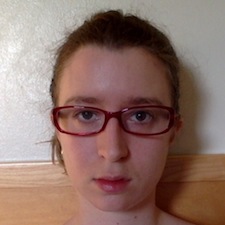Our experience of the world presents itself to us as a structured whole. Nonetheless, most empirical and theoretical work on perception and consciousness proceeds by focusing on artificially isolated parts of this whole. For example, it is common to study colour sensations in isolation, sidelining the fact that colours are most often perceived as properties of solid, meaningful objects, situated in a complex perceptible environment, and so experienced in the context of a multitude of other sensed qualities. Is it possible to study sensation without alienating it from this complex context? What are the theoretical and empirical consequences of treating experience as a structured whole rather than a patchwork of unpluggable sensory elements? How can this structured experience be described and studied rigorously? As a means of investigating these questions, this project will explore the relationship between two influential movements that aimed to study experience as an integrated whole, rather than decomposing it artificially: gestalt psychology and phenomenology.
In the early 20th century, gestalt psychologists discovered and analysed empirical phenomena that seemed to indicate that experience is structured, and that this structure cannot be reduced to the properties of simpler components. For instance, the very same image may be seen as either two faces against a black background or a candlestick against a white background: different structures with the same perceptible parts, and thus not reducible to those parts. At around the same time, several phenomenologists — philosophers who aimed to uncover fundamental structures of perception and thought through careful reflection on experience — came to the same conclusion. Some, such as Maurice Merleau-Ponty, argued that such considerations about the structure of perception imply a non-reductive metaphysics of experience, whereby experience is fundamentally understood in terms of its structure. If we want to understand what a tornado is, we shouldn’t focus on the atoms and particles in and around it—instead, we should focus on the complex but stable structure that those particles are caught up in. Similarly, Merleau-Ponty argued that understanding perceptual experience requires focusing not on brains or nervous systems, but on the structured patterns of interaction with the world that our brains and nervous systems are caught up in.
Gestalt psychology and phenomenology continue to influence cognitive science, but the implications of their anti-reductive analyses for the contemporary metaphysics of experience have yet to be investigated—a gap this project aims to fill. Have the results of gestalt psychology been subsumed, or superseded, by intervening cognitive science? Do they really entail the metaphysical conclusions that some phenomenologists tried to draw from them? And how do the non-reductive views that phenomenologists took to be supported by gestalt psychology map on to contemporary theorising? We will investigate the possibility that these influential research programmes still have important lessons to teach us and that, taken together, gestalt psychology and phenomenology suggest a philosophically sophisticated and empirically tractable, non-reductive yet naturalist paradigm for investigating the mind.
The project will culminate in an international conference on 7-9 July 2017. More information can be found at the project’s own website here. Videos of talks from the project’s first conference, which took place in December 2016, can be found here.
Image: Snowballs at the Post Office (Washington, DC), takomabibelot

Alistair Isaac
Co-Principal Investigator

Dave Ward
Co-Principal Investigator

Rosa Hardt
Research Assistant